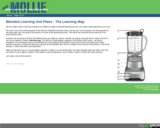
Creating a Blended Learning Unit Map
- Subject:
- Education
- Material Type:
- Activity/Lab
- Reading
- Provider:
- AEA Learning Online
- Provider Set:
- OLLIE
- Author:
- Evan Abbey
- Date Added:
- 01/13/2021

Creating a Blended Learning Unit Map
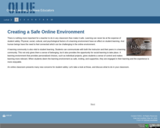
Creating a Safe Online Learning Environment
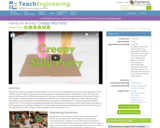
Students learn about viscoelastic material behavior, such as strain rate dependence and creep, by using silly putty, an easy-to-make polymer material. They learn how to make silly putty, observe its behavior with different strain rates, and then measure the creep time of different formulations of silly putty. By seeing the viscoelastic behavior of silly putty, students start to gain an understanding of how biological materials function. Students gain experience in data collection, graph interpretation, and comparison of material properties to elucidate material behavior. It is recommended that students perform Part 1of the activity first (making and playing with silly putty), then receive the content and concept information in the associated lesson, and then complete Part 2 of the activity (experimenting and making measurements with silly putty).
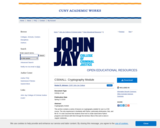
This archive contains a series of lessons on cryptography suitable for use in a CS0 course. The only requirement is familiarity with Python, particularly dictionaries, lists, and file IO. It is also assumed that students know how to create stand-alone Python programs and interact with them through the terminal. Most of the work is done in Jupyter notebooks.
The material found in the notebooks is a combination of reading material, exercises, activities and assignments. Below are descriptions of each lesson or assignment and links to notebooks on Cocalc. The same files are available for batch download in this archive.
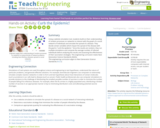
Using a website simulation tool, students build on their understanding of random processes on networks to interact with the graph of a social network of individuals and simulate the spread of a disease. They decide which two individuals on the network are the best to vaccinate in an attempt to minimize the number of people infected and "curb the epidemic." Since the results are random, they run multiple simulations and compute the average number of infected individuals before analyzing the results and assessing the effectiveness of their vaccination strategies.

This lecture presents information about cybercrime, which has become the most ubiquitous crime world-wide and affects individuals, companies and government. The lecture indicates that 95% of all cybercrime is preventable and describes a myriad of cyber security techniques that are available to prevent hacking. Legislation to combat cybercrime is presented as well as the places where cybercrime should be reported.
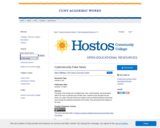
The goals of this activity are to facilitate team work, critical thinking, and presentation skills in the area of cybersecurity and fake news. Students will be grouped into two teams. As a team, they will choose and analyze cases and ethical questions about fake news through the questions presented in the activity. They will present their analysis to the class.
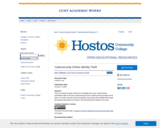
This is an activity the goals of which are to facilitate team work; critical thinking; presentation skills in the area of cybersecurity and law. Students will be grouped into two teams. As a team, they will choose and analyze cases about online identity theft through the questions presented in the activity. They will present their analysis to the class.
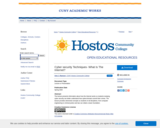
The lecture presents information about how the Internet works so students studying cyber security can better understand how cybercriminals commit their crimes. The lecture provides elemental concepts so students of all disciplines, from computer engineering to criminal justice and law can obtain a basic foundation.
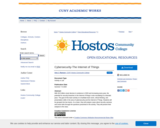
With 38.5 billion smart devices in existence in 2020 and increasing every year, the potential for security breaches in the Internet of things is also escalating at a dramatic pace. The goal of this team activity is to facilitate team work, critical thinking, and presentation skills in the area of cybersecurity and the Internet of Things. Students will be grouped into two teams. As a team, they will analyze cases about security cameras and smart dolls through the questions presented in the activity. They will present their analysis to the class.
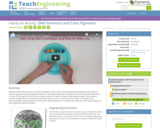
Students perform DNA forensics using food coloring to enhance their understanding of DNA fingerprinting, restriction enzymes, genotyping and DNA gel electrophoresis. They place small drops of different food coloring ("water-based paint") on strips of filter paper and then place one paper strip end in water. As water travels along the paper strips, students observe the pigments that compose the paint decompose into their color components. This is an example of the chromatography concept applied to DNA forensics, with the pigments in the paint that define the color being analogous to DNA fragments of different lengths.

DSOKids is the Dallas Symphony Orchestra's magical doorway to a world of musical fun and learning for students, parents and teachers. The site's mission is to provide attractive, accessible and child-friendly resources that introduce symphonic music, the orchestra and its instruments, and to encourage both adults and young people to explore the world of the symphony orchestra.
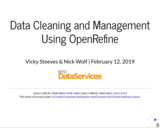
Course materials on using OpenRefine, a powerful tool for cleaning and transforming tabular data.
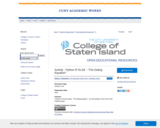
A Python IF-ELSE activity - "The Dating Equation" - for CS0 students. Part of the CUNY CS04All project.
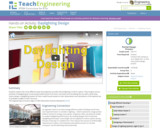
Students explore the many different ways that engineers provide natural lighting to interior spaces. They analyze various methods of daylighting by constructing model houses from foam core board and simulating the sun with a desk lamp. Teams design a daylighting system for their model houses based on their observations and calculations of the optimal use of available sunlight to their structure.
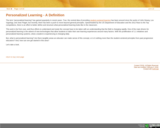
Definition of Personalized Learning
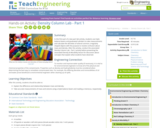
In this first part of a two-part lab activity, students use triple balance beams and graduated cylinders to take measurements and calculate the densities of several common, irregularly shaped objects with the purpose to resolve confusion about mass and density. After this activity, conduct the associated Density Column Lab - Part 2 activity before presenting the associated Density & Miscibility lesson for discussion about concepts that explain what students have observed.
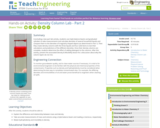
Concluding a two-part lab activity, students use triple balance beams and graduated cylinders to take measurements and calculate densities of several household liquids and compare them to the densities of irregularly shaped objects (as determined in Part 1). Then they create density columns with the three liquids and four solid items to test their calculations and predictions of the different densities. Once their density columns are complete, students determine the effect of adding detergent to the columns. After this activity, present the associated Density & Miscibility lesson for a discussion about why the column layers do not mix.
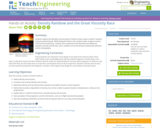
Students explore the densities and viscosities of fluids as they create a colorful 'rainbow' using household liquids. While letting the fluids in the rainbow settle, students conduct 'The Great Viscosity Race,' another short experiment that illustrates the difference between viscosity and density. Later, students record the density rainbow with sketches and/or photography.
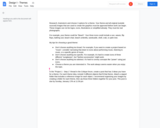
An exercise to get students thinking about design and reducing objects from complex imagery to simple icons.